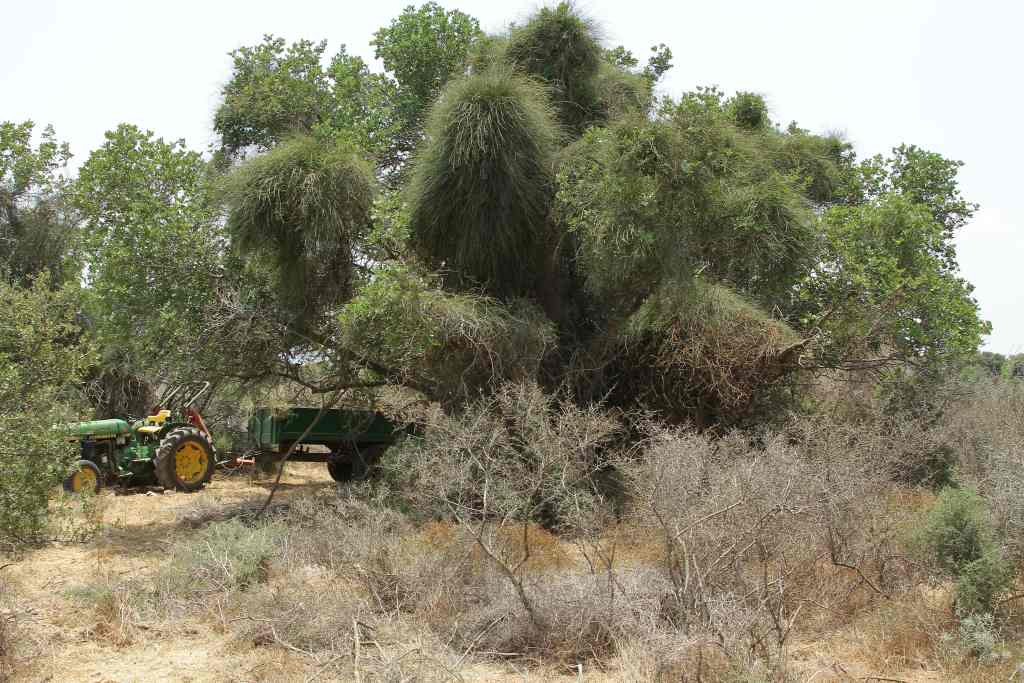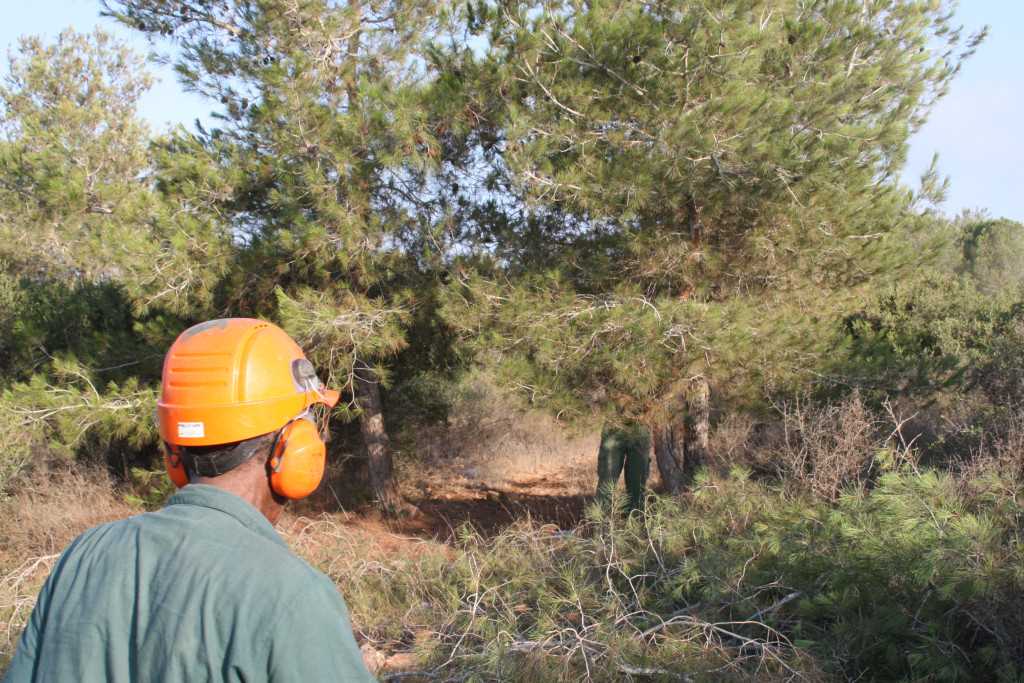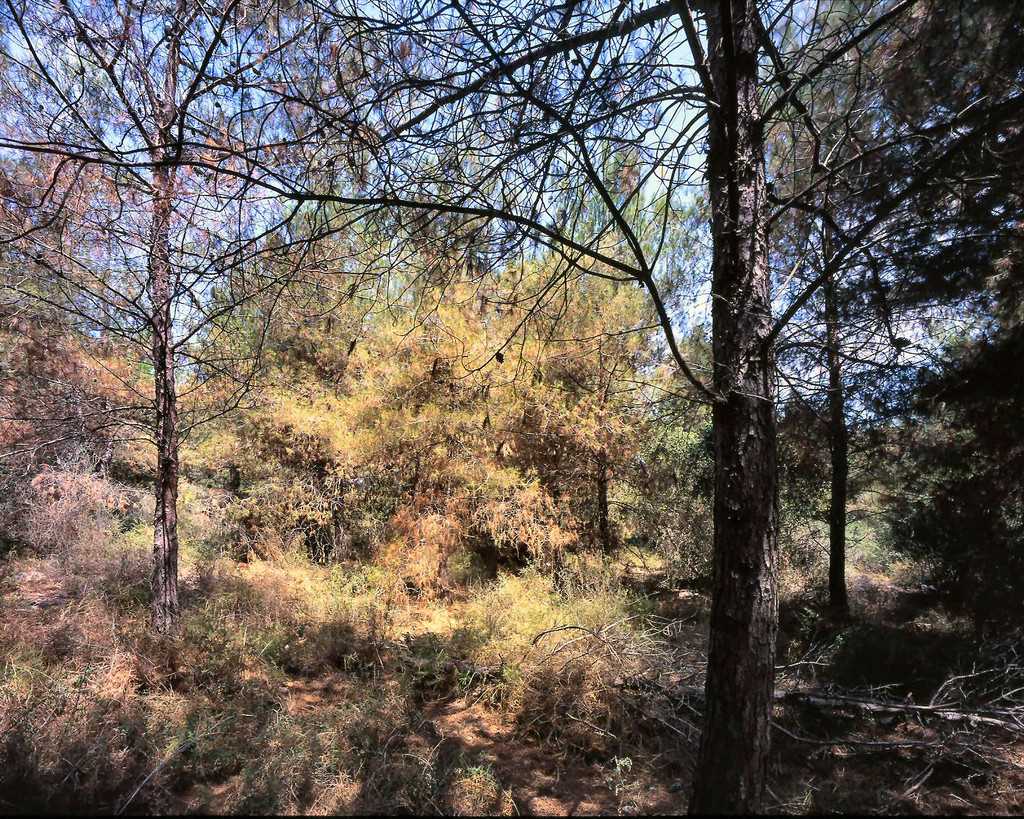woodland characteristic of the site. At Ramat Hanadiv, as in the other planted forests in Israel, a significant number of trees, and even entire plots, showed signs of stress over the years, and the ‘forest trees’ turned from a solution to an issue that required consideration and intervention. With time, the profitability of Israel’s lumber proved disappointing, and recreational and ecological objectives came to dominate Israel’s afforestation approach.
In 1985, the management of Yad Hanadiv decided, in collaboration with the Society for the Protection of Nature in Israel, to change the land management approach of Ramat Hanadiv and according to ecological-landscape criteria while considering public use. Following this paradigm change, the approach to the planted forests also changed; thus, in the early 1990s, several thinning and clear-cutting interventions were performed in some of the planted groves, with the aim of fitting the forest component into the ‘desired landscape’ of the Nature Park. The dense, uniform cypress groves that did not provide shade for hikers or looked deprived and weakened due to disease or ‘did not integrate well into the landscape’, were therefore removed or significantly thinned. The pine groves were restructured into





